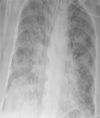An intelligent framework using disruptive technologies for COVID-19 analysis
- PMID: 33162617
- PMCID: PMC7598374
- DOI: 10.1016/j.techfore.2020.120431
An intelligent framework using disruptive technologies for COVID-19 analysis
Abstract
This paper describes a framework using disruptive technologies for COVID-19 analysis. Disruptive technologies include high-tech and emerging technologies such as AI, industry 4.0, IoT, Internet of Medical Things (IoMT), big data, virtual reality (VR), Drone technology, and Autonomous Robots, 5 G, and blockchain to offer digital transformation, research and development and service delivery. Disruptive technologies are essential for Industry 4.0 development, which can be applied to many disciplines. In this paper, we present a framework that uses disruptive technologies for COVID-19 analysis. The proposed framework restricts the spread of COVID-19 outbreaks, ensures the safety of the healthcare teams and maintains patients' physical and psychological healthcare conditions. The framework is designed to deal with the severe shortage of PPE for the medical team, reduce the massive pressure on hospitals, and track recovered patients to treat COVID-19 patients with plasma. The study provides oversight for governments on how to adopt technologies to reduce the impact of unprecedented outbreaks for COVID-19. Our work illustrates an empirical case study on the analysis of real COVID-19 patients and shows the importance of the proposed intelligent framework to limit the current outbreaks for COVID-19. The aim is to help the healthcare team make rapid decisions to treat COVID-19 patients in hospitals, home quarantine, or identifying and treating patients with typical cold or flu.
Keywords: 5 G; Blockchain; Covid-19; Healthcare; Industry 4.0; Internet of medical things (iomt).
© 2020 Elsevier Inc. All rights reserved.
Conflict of interest statement
The authors declare that there is no conflict of interest in the research
Figures














References
-
- Abdel-Basset M., Mohamed R. A novel plithogenic TOPSIS- CRITIC model for sustainable supply chain risk management. J. Clean. Prod. 2020;247:0959–6526. 119586.
-
- Abdel-Basset M., Nabeeh N.A., El-Ghareeb H.A., Aboelfetouh A. Utilizing neutrosophic theory to solve transition difficulties of iot-based enterprises. Enterprise Information Systems. 2019
-
- Ammenwerth E., Ehlers F., Hirsch B., Gratl Gordon. HIS-Monitor: an approach to assess the quality of information processing in hospitals. Int J Med Inform. 2007;76:216–225. Issues 2–3. - PubMed
-
- Bai L.and . Chinese experts’ consensus on the Internet of Things-aided diagnosis and treatment of coronavirus disease 2019. Clinical eHealth. 2020;3:7–15.
LinkOut - more resources
Full Text Sources
Other Literature Sources
